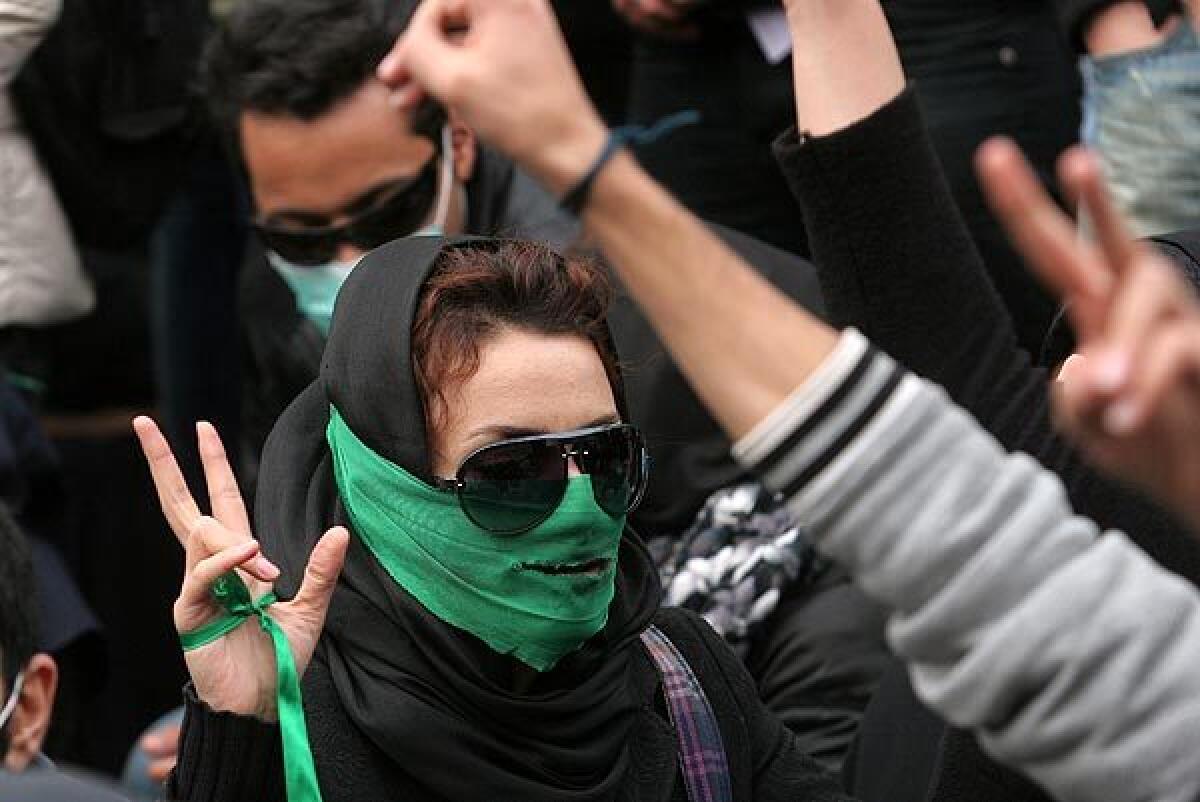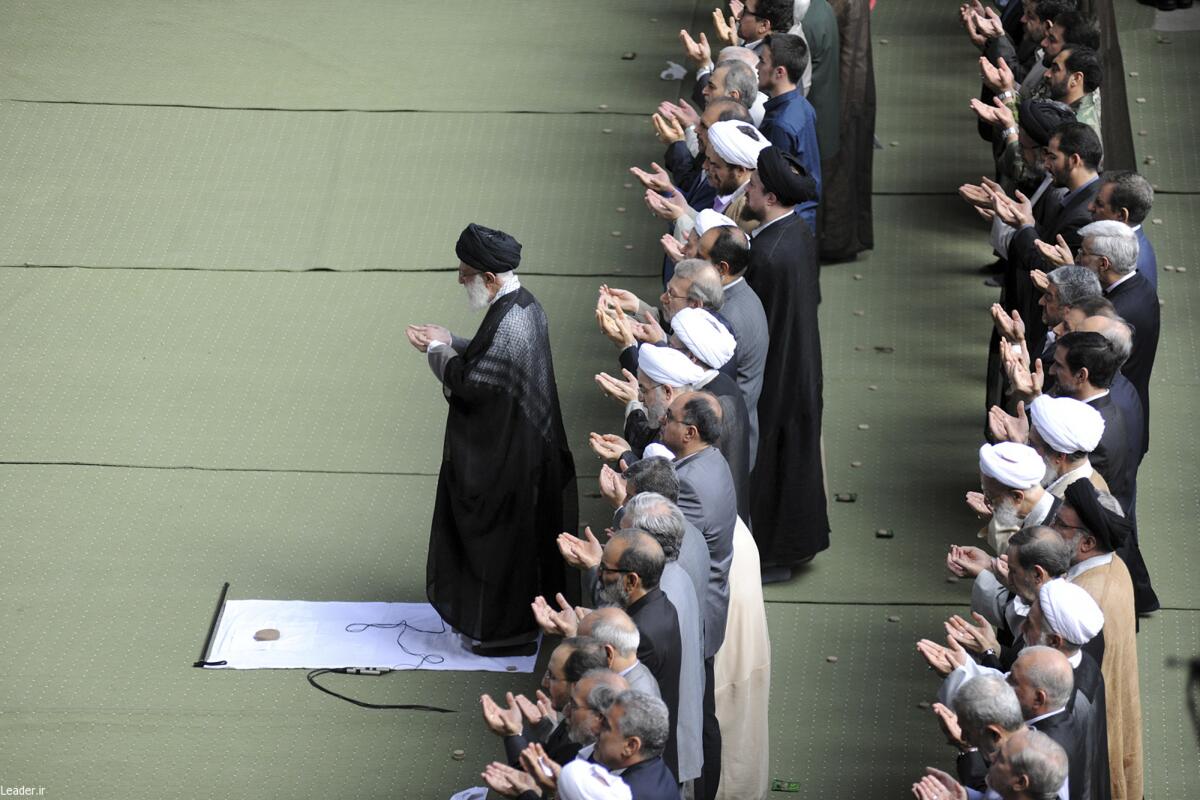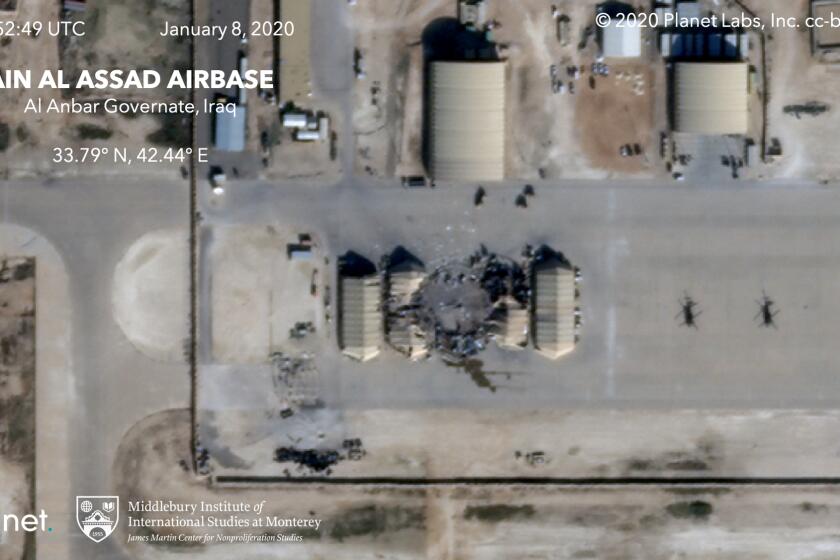‘Death to the dictator’: What is Iran’s future?

The Islamic Republic is nervous and men with guns are back on motorcycles.
Supreme Leader Ayatollah Ali Khamenei has announced he will lead Friday prayers in Tehran — something he does only in times of crisis. Iran’s political elites, meanwhile, are bracing for a new round of United Nations sanctions over the unraveling 2015 nuclear deal. And the feared plainclothes Basij paramilitary soldiers on motorcycles are roaring through crowds at university protests as the nation braces for fresh upheaval.
The Islamic Republic has for decades weathered threats from within and without. It is no stranger to protests. Ever since the disputed 2009 presidential election that sparked months-long political demonstrations, known as the Green Movement, Khamenei has dispatched the Islamic Revolutionary Guard Corps and paramilitaries to crush defiance with tear gas and bullets.
The latest round of unrest was triggered last week after Iranian officials admitted that the Revolutionary Guard had mistakenly fired missiles that downed a Ukraine International Airlines jet, killing all 176 people aboard. The protests follow a massive revolt in November that left hundreds of people dead. The question now is whether a reignited fervor for the theocracy to be overthrown marks a danger zone for Khamenei or becomes the latest frustration by protesters seeking to upend a government run by ayatollahs since the 1979 revolution.
It is uncertain whether the protests will grow big enough and include all layers of society. During the Arab Spring, which began in 2011, Egyptian protesters, backed by the military, overthrew autocrat Hosni Mubarak. But in Syria, President Bashar Assad, supported by Iran and its proxy, the Lebanese militant group Hezbollah, beat back protesters and plunged the country into civil war.
The Jan. 8 downing of the jetliner came as Iranian officials fired ballistic missiles at two military bases used by U.S. forces in Iraq in retaliation for the drone strike ordered by President Trump that killed Iranian military strategist Gen. Qassem Suleimani. Hundreds of thousands of Iranians took to the streets of Tehran to mourn Suleimani, commander of the elite Quds Force.

But any suggestion that the government could exploit a brief show of unity — and play on anger against Trump for imposing harsher sanctions in 2018 — to ease deepening resentment was short-lived. Iranians are now channeling their frustrations at their leaders. The test, as it’s been over the last decade, is how fiercely the government will respond to silence dissent even as chants of “Death to the dictator!” echo down boulevards and European nations threaten new sanctions over charges Iran has violated the nuclear accord by enriching uranium above its limits.
“These are serious protests,” said Majid Tavakoli, 34, a human rights activist and former political prisoner from the Green Movement. “The firing of the rocket at the plane changed the atmosphere [in Iran]. Despite the November crackdown and Suleimani’s funeral, the streets have been revived and nationwide protests have taken place.”
Tavakoli is a former student at Tehran’s Amirkabir University of Technology. He was arrested in 2009 and spent four years in jail on charges including “insulting the supreme leader” and “spreading propaganda against the regime.” He said of the current protests: “The language of the slogans [now] is to reject the political system and [demand] structural change.”
What’s at stake is the future of a government born of revolution.
“The reality of these protests is that there is no political opposition,” said Vali Nasr, a professor at the Johns Hopkins School of Advanced International Studies in Washington. “There is no leadership. They [protesters] are not fighting for something, they are fighting against something.”
However, Nasr added that the protests reveal that Khamenei no longer has an ideological hold over his population. “We are at a place,” said Nasr, “where [a] majority of Iranians are not supportive of the Islamic Republic, but it doesn’t mean they want to overthrow that government.”
Hard-liners, for example, are expected to win big in the parliamentary elections slated for February, analysts said. Already, 90 members of Iran’s parliament, many of whom are reformist-leaning, have been barred from seeking reelection after the Guardian Council rejected them.

Students, teachers, actors and engineers have taken to the streets, standing side by side, shouting slogans in unison. On Sunday, riot police in black uniforms and helmets lined Azadi street in Tehran. Despite the massive police presence, hundreds of protesters gathered nearby in downtown Tehran.
“Fear, fear, we are all together!” people chanted as security forces fired tear gas at crowds. Many of the protests have erupted outside prestigious institutions including Amirkabir University and Sharif University of Technology, where demonstrators have yelled: “The Islamic Republic must be destroyed,” and “Supreme Leader, resign, resign!”
Such outbursts illustrate an uptick in intensity compared with the 2009 unrest, said a former leader of the Green Movement who served 10 years in prison on charges of “creating unease in the public mind.” He spoke on condition of anonymity because of safety concerns.
“The same slogans have become more severe,” he said. “We hear ‘Death to the dictator!’ The center of power is targeted, unlike November, when the economy and the livelihood of Iranians was under question. This time, the issue is politics.”
Since the early 2000s, beginning with the administration of then-President Mohammad Khatami, hard-liners in the Islamic Republic have repressed calls of reform and stoked anti-American sentiment. Western nations have a long history of interfering in Iran’s affairs, including a 1953 CIA-backed coup to overthrow the prime minister. From the student protests in 1999 to the ones that erupted in 2003, authorities in Iran have become adept at clamping down on dissent and rejecting any calls for internal reform.
It wasn’t until 2009, during the Green Movement, that Iranians upended the legitimacy of the Islamic Republic, said Pouya Alimagham, a historian of the Middle East and professor at MIT. What started off as anger directed toward what many considered a rigged election and the defeat of Mir-Hossein Mousavi and Mehdi Karroubi soon galvanized protesters into usurping whatever religious symbolism the Islamic Republic had co-opted.
“The potency of the Islamic Republic’s ideology has been robbed by activists,” said Alimagham.
More to Read
Start your day right
Sign up for Essential California for news, features and recommendations from the L.A. Times and beyond in your inbox six days a week.
You may occasionally receive promotional content from the Los Angeles Times.








